insects (Page 2)
Municipalities and prefectures are hoping they can stop the dreaded red-necked longhorn beetle before they get out of hand.
When you stop and think about it, putting pictures of cockroaches on a product for people who hate them is kind of a weird strategy.
Incredible photos show an extraordinary number of insects wreaked havoc on drivers, closing a bridge and causing accidents on the weekend.
Ever wonder why cockroaches are so shiny? Well, let’s put our fears aside and learn a little more about one of the urban human’s greatest foes.
Unless they’re dedicated entomologists, this could be the perfect place to freak out your unsuspecting friends.
There’s no need to use toxic substances to kill off unwanted insects in Japan, because there’s a much more eco-friendly method they’ve been using for hundreds of years. Although it may not be scientifically proven, many people feel this is still the best way to get rid of everything from garden aphids to mosquitoes. And if the method has endured for centuries, it must be at least somewhat effective right?
This uniquely Japanese insect repellent is far cheaper than commercial insecticides, easier to implement, and you only have to use it once a year in spring or early summer. And the best part? It involves Japanese sake!
What’s the secret? We’ll let you know after the jump.
You’ve probably heard of Battleship Island before, the small abandoned island off of Nagasaki that looks like a battleship from afar and a zombie wasteland up close. It’s on its way to becoming a UNESCO world heritage site, which will bring in more tourists and help with its preservation.
But while Battleship Island gets its moment in the limelight, other abandoned islands around Japan are having a pretty tough time. Take Hoboro Island off the coast of Hiroshima for instance. It was once a decent-sized island known for pearls and oysters, but now it spends its days mainly being eaten away by millions of bugs and slowly sinking into the sea.
Yes, you read that right: A cute bug! Well, that is up to debate, but it is definitely not as a gross as other bugs, like that hand-sized spider I had in my house that one time…
Because of the way they hover and their fuzzy bodies, these cute little fellas kind of look like a cross between a hummingbird and a bee. Their long mouth/noses resemble those of a nasty mosquito, but the fact that they are barely 10mm long (approximately the length of the first part of your pinkie finger) and harmless pollinators make them really people-friendly. Join us after the jump as we meet arguably the world’s most affable insect: the Tiger Bee Fly.
Earlier this year Isamu Akasaki, Hiroshi Amano, and Shuji Nakamura won the Nobel Prize in Physics for their development of an efficient blue light-emitting diode (blue LED).
It was a well-deserved victory for the Japanese scientists whose invention continues to impact our lives in ways we often don’t even notice. It could be in the display you’re looking at right now or it could be helping some of the millions of people in parts of the world without electrical infrastructure get affordable lights for their homes.
And now in a report published in Scientific Reports, a team of researchers from Tohoku University have found a new use for blue LED. When used in the right frequency it can be an effective, safe, clean, and cheap way to kill insects. For the first time, they showed that visible light around the blue part of the spectrum is lethal to insects such as mosquitoes and fruit flies.
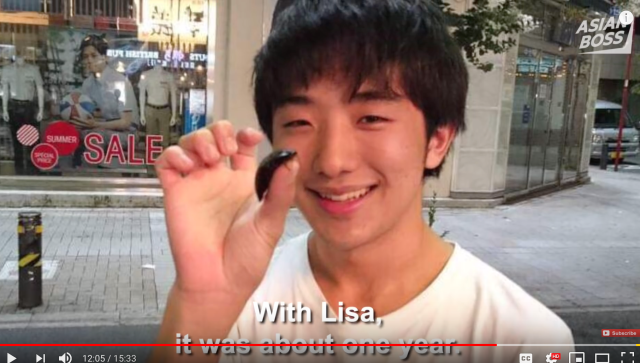



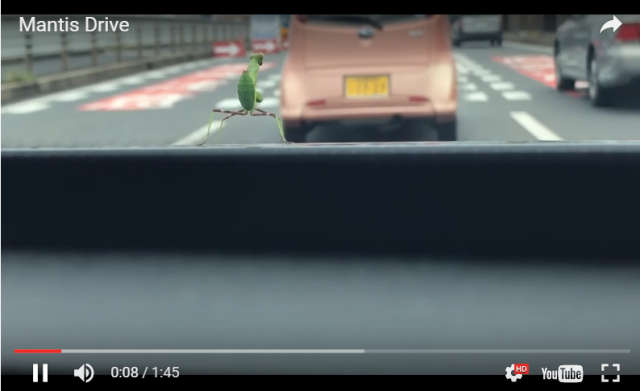

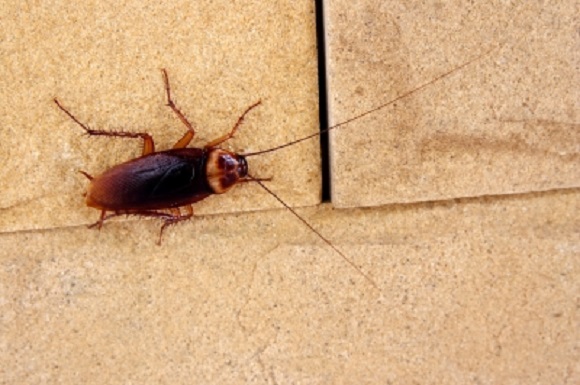
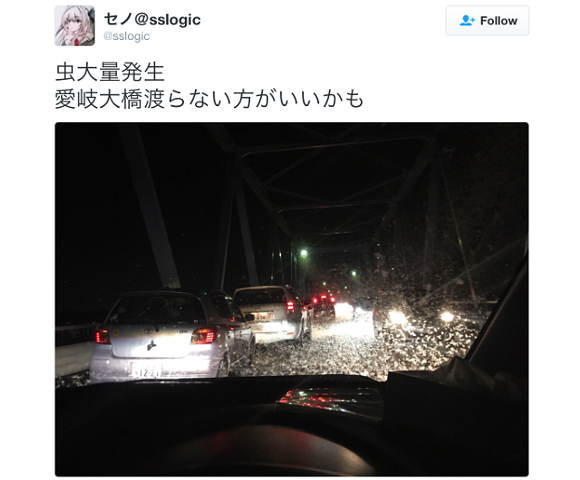
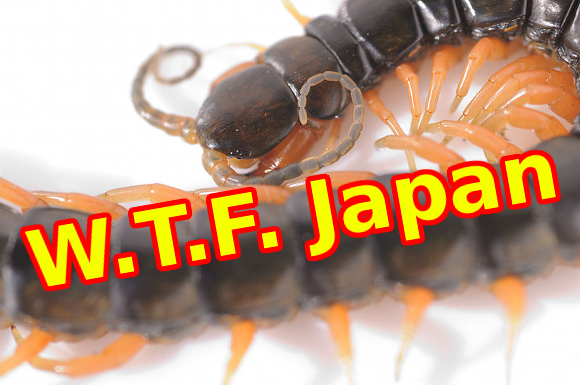
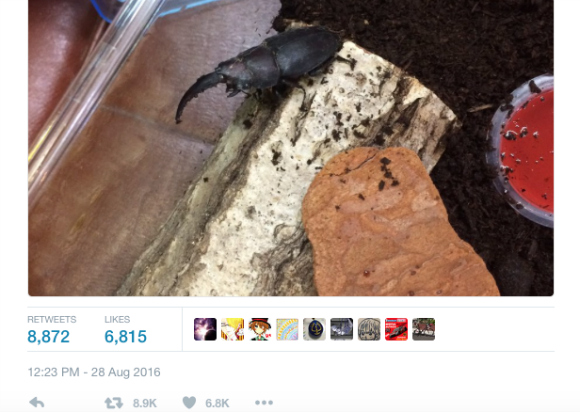
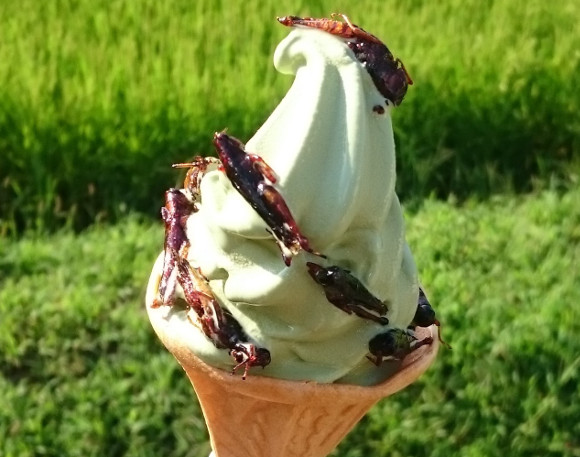
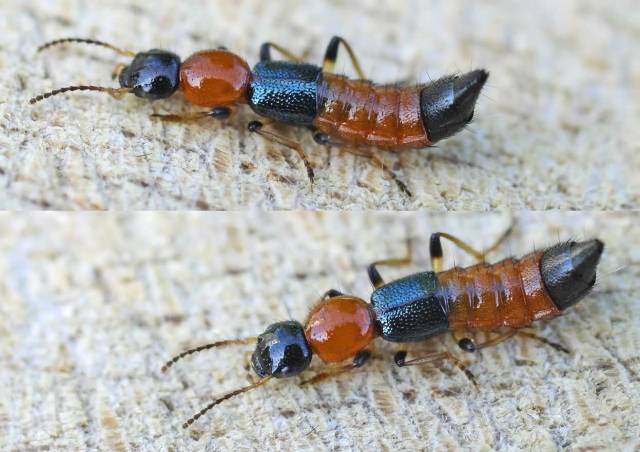
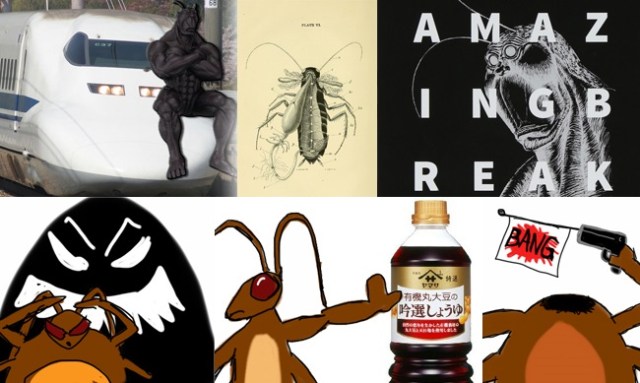

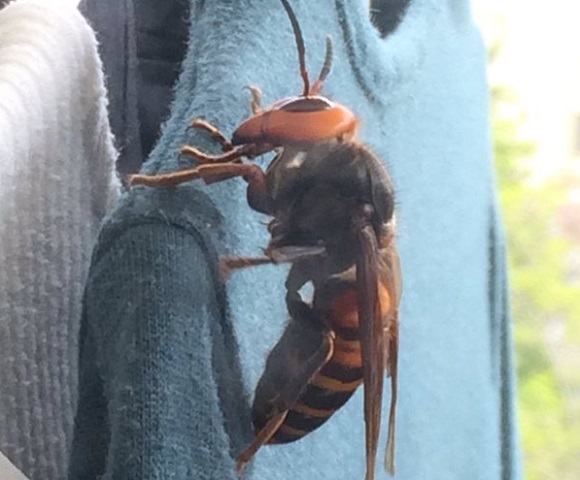
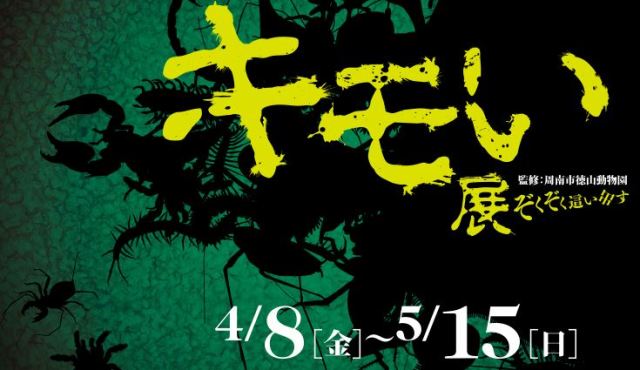
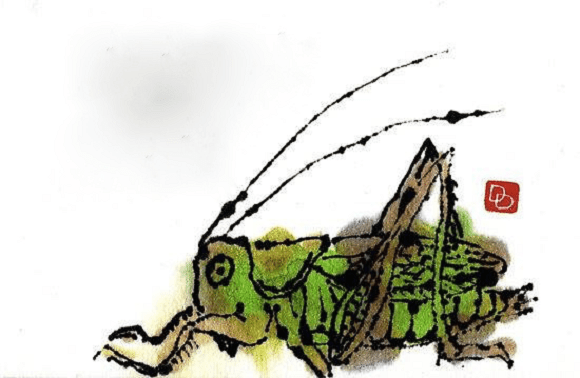

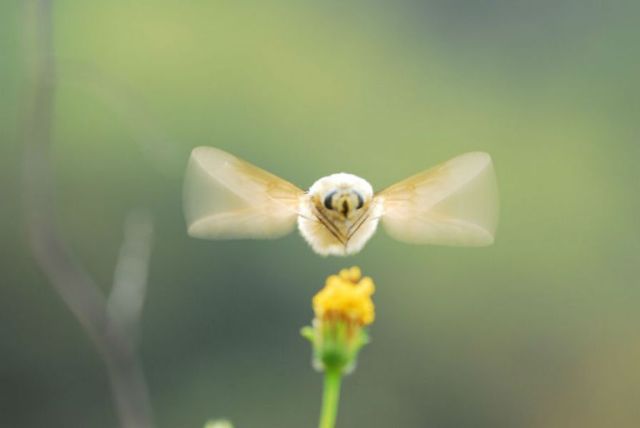

 Disillusionment at Tsukiji’s tourist-target prices led us to a great ramen restaurant in Tokyo
Disillusionment at Tsukiji’s tourist-target prices led us to a great ramen restaurant in Tokyo Japan’s otoshidama tradition of giving kids money at New Year’s gets a social welfare upgrade
Japan’s otoshidama tradition of giving kids money at New Year’s gets a social welfare upgrade New Attack on Titan theme park attraction coming to Fuji-Q Highland
New Attack on Titan theme park attraction coming to Fuji-Q Highland Can a dirty butthole make you filthy rich in Japan? We’re starting a New Year’s lottery experiment
Can a dirty butthole make you filthy rich in Japan? We’re starting a New Year’s lottery experiment 7-Eleven Japan starts new temporary luggage storage service in over 300 branches
7-Eleven Japan starts new temporary luggage storage service in over 300 branches Foreign shoppers in Akihabara tip us off to an awesome souvenir idea: DIY Paper Theater kit【Pics】
Foreign shoppers in Akihabara tip us off to an awesome souvenir idea: DIY Paper Theater kit【Pics】 Lacquerware supplier to emperor of Japan and Pokémon team up for new tableware
Lacquerware supplier to emperor of Japan and Pokémon team up for new tableware The 5 best entry-level roadside stations in Japan’s Kanto Region, according to experts
The 5 best entry-level roadside stations in Japan’s Kanto Region, according to experts My Neighbour Totoro rice cookers and pots bring Studio Ghibli anime flair to your kitchen
My Neighbour Totoro rice cookers and pots bring Studio Ghibli anime flair to your kitchen Is it rude to sing along at concerts in Japan? We ask a pro musician for his take
Is it rude to sing along at concerts in Japan? We ask a pro musician for his take Japan may add Japanese language proficiency, lifestyle classes to permanent foreign resident requirements
Japan may add Japanese language proficiency, lifestyle classes to permanent foreign resident requirements Starbucks Japan releases new zodiac chilled cup drink for 2026
Starbucks Japan releases new zodiac chilled cup drink for 2026 Starbucks teams up with 166-year-old Kyoto doll maker for Year of the Horse decorations【Photos】
Starbucks teams up with 166-year-old Kyoto doll maker for Year of the Horse decorations【Photos】 Starbucks on a Shinkansen bullet train platform: 6 tips for using the automated store in Japan
Starbucks on a Shinkansen bullet train platform: 6 tips for using the automated store in Japan Is this the most relaxing Starbucks in Japan?
Is this the most relaxing Starbucks in Japan? Large amount of supposed human organs left in Osaka marketplace
Large amount of supposed human organs left in Osaka marketplace Tokyo’s Tsukiji sushi neighborhood asks tour groups to stay away for the rest of the month
Tokyo’s Tsukiji sushi neighborhood asks tour groups to stay away for the rest of the month Japan’s human washing machines will go on sale to general public, demos to be held in Tokyo
Japan’s human washing machines will go on sale to general public, demos to be held in Tokyo Japanese train company is letting fans buy its actual ticket gates for their homes
Japanese train company is letting fans buy its actual ticket gates for their homes Tokyo considering law requiring more trash cans following litter increase in heavily touristed area
Tokyo considering law requiring more trash cans following litter increase in heavily touristed area Nintendo’s Kirby now delivering orders at Kura Sushi restaurants, but not in Japan
Nintendo’s Kirby now delivering orders at Kura Sushi restaurants, but not in Japan Tokyo event lets you travel back in time, for free, to celebrate 100 years since Showa era start
Tokyo event lets you travel back in time, for free, to celebrate 100 years since Showa era start Sanrio theme park in Japan announces plans to expand into a Sanrio resort
Sanrio theme park in Japan announces plans to expand into a Sanrio resort Survey asks foreign tourists what bothered them in Japan, more than half gave same answer
Survey asks foreign tourists what bothered them in Japan, more than half gave same answer Japan’s deadliest food claims more victims, but why do people keep eating it for New Year’s?
Japan’s deadliest food claims more victims, but why do people keep eating it for New Year’s? We deeply regret going into this tunnel on our walk in the mountains of Japan
We deeply regret going into this tunnel on our walk in the mountains of Japan Studio Ghibli releases Kodama forest spirits from Princess Mononoke to light up your home
Studio Ghibli releases Kodama forest spirits from Princess Mononoke to light up your home Major Japanese hotel chain says reservations via overseas booking sites may not be valid
Major Japanese hotel chain says reservations via overseas booking sites may not be valid Put sesame oil in your coffee? Japanese maker says it’s the best way to start your day【Taste test】
Put sesame oil in your coffee? Japanese maker says it’s the best way to start your day【Taste test】 The top 10 annoying foreign tourist behaviors on trains, as chosen by Japanese people【Survey】
The top 10 annoying foreign tourist behaviors on trains, as chosen by Japanese people【Survey】 No more using real katana for tourism activities, Japan’s National Police Agency says
No more using real katana for tourism activities, Japan’s National Police Agency says Starbucks Japan reveals new sakura drinkware collection, inspired by evening cherry blossoms
Starbucks Japan reveals new sakura drinkware collection, inspired by evening cherry blossoms Foreign shoppers in Akihabara tip us off to an awesome souvenir idea: DIY Paper Theater kit【Pics】
Foreign shoppers in Akihabara tip us off to an awesome souvenir idea: DIY Paper Theater kit【Pics】 Lacquerware supplier to emperor of Japan and Pokémon team up for new tableware
Lacquerware supplier to emperor of Japan and Pokémon team up for new tableware The 5 best entry-level roadside stations in Japan’s Kanto Region, according to experts
The 5 best entry-level roadside stations in Japan’s Kanto Region, according to experts My Neighbour Totoro rice cookers and pots bring Studio Ghibli anime flair to your kitchen
My Neighbour Totoro rice cookers and pots bring Studio Ghibli anime flair to your kitchen Is it rude to sing along at concerts in Japan? We ask a pro musician for his take
Is it rude to sing along at concerts in Japan? We ask a pro musician for his take Shimane has a secret hot spring town that feels like stepping into an old Japanese film
Shimane has a secret hot spring town that feels like stepping into an old Japanese film Large amount of supposed human organs left in Osaka marketplace
Large amount of supposed human organs left in Osaka marketplace A Japanese dating app matched our bachelorette with a Buddhist monk, and she learned some things
A Japanese dating app matched our bachelorette with a Buddhist monk, and she learned some things Our Japanese reporter’s experience with crawfish in the US left him stunned
Our Japanese reporter’s experience with crawfish in the US left him stunned Japanese convenience store packs a whole bento into an onigiri rice ball
Japanese convenience store packs a whole bento into an onigiri rice ball More Than a Capsule Stay: Why Solo Travelers Choose “global cabin Yokohama Chinatown”
More Than a Capsule Stay: Why Solo Travelers Choose “global cabin Yokohama Chinatown” Hello Kitty Choco Egg figures are an adorable trip through three periods of Japanese pop culture【Pics】
Hello Kitty Choco Egg figures are an adorable trip through three periods of Japanese pop culture【Pics】